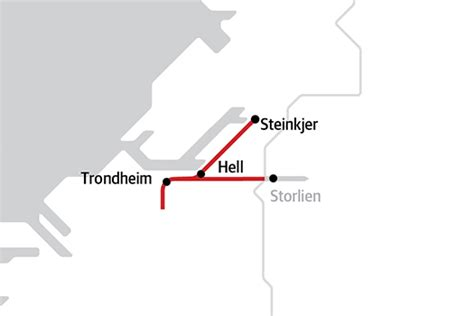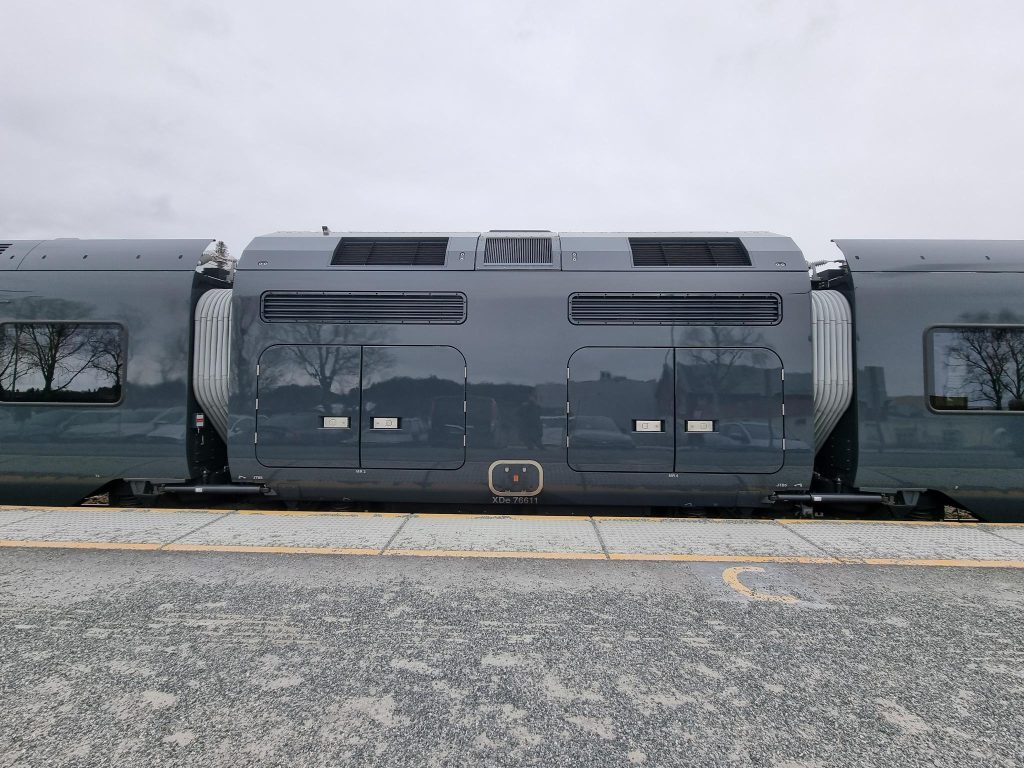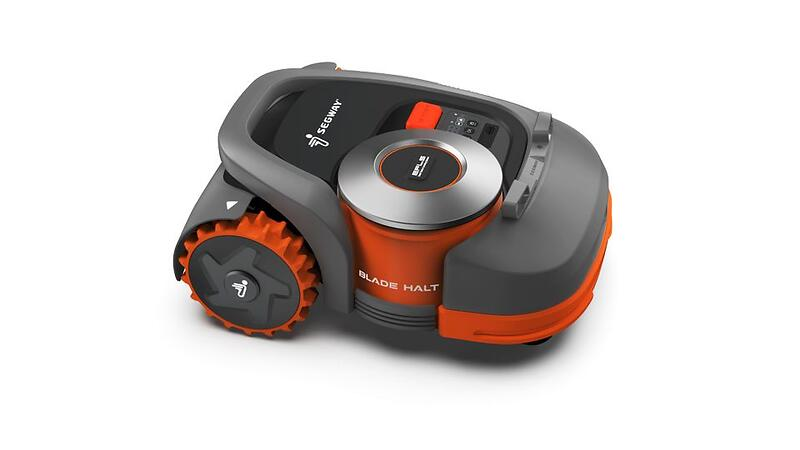Planet Earth has always undergone transformations, sometimes having enormous effects much more significant than the current warming of the planet. A lot has happened in the 4.6 billion years (about 145 Ps= Petaseconds, in SI units). So, while we will never live on a perfect planet, there is a lot people can do to make it a better planet. Much of that behaviour means doing less. Each of us has a short period of time, perhaps 80 years (2.5 Gs= Gigaseconds), to make a positive impact.
Less
For the past two months (2023-03 and -04), I have taken a sabbatical from writing weblog posts, allegedly to concentrate on a kitchen renovation. The renovation probably did not proceed any faster, but it was delightful to avoid deadline anxiety, which was the real reason for the writing break. Writing was taking up too much of my time. Thus, this post signals that I intend to be more moderate with my writing.
As is the case with most of my posts, much of this one was written months in advance of its intended publication date, sometime in 2024. When this post was originally written, it was for a celebration. Rail journeys to and from Inderøy would stop using Type/ Class 92 diesel powered railcars. Finally, the Trønder line, opened 1882-07-22, would be fully electrified.
Now, Banenor – the Norwegian government-owned corporation that builds out the rail network, claims it is currently working on part of that route from Trondheim to Hell or Stjørdal heading north, and to Storlien, heading east. That section of the line that continues north, between Stjørdal and Steinkjer, where Røra in Inderøy has a station, has been put on indefinite hold. The map, below, provides some clarification about the location of the routes mentioned. Inderøy is unmarked, but it is about 3/4 of the distance along the route from Hell to Steinkjer.
When 2023-05-01 arrived, this post was almost abandoned, because of this unpleasant fact. However, I decided to continue. The original two sentence, opening paragraph appears immediately below, and has not been changed.
One of the major goals Patricia and I share, is to reduce our environmental footprints. Much of this reduction will be associated with transportation.
On our last major rail journeys from Drammen (near Oslo) to Bergen, Patricia was sitting beside a grump, who was pouting because of his lack of internet access, instead of enjoying the scenery. I have promised to change my attitude. I will make notes with a pen on paper on future rail journeys, and use my smartphone to take photos, and will avoid connecting to the internet.
In my defence, journeys always seem too long. My concentration wains after a few hours. Thus, I have obtained a concession that most journeys will be restricted, generally, to an a duration of six hours (a day), but with the possibility of exceptions. This applies not just to trains, but also to other forms of travel.
That rail journey was on an electrified rail line, that obtains its energy from renewable sources. The Class/ Type 92 dielsel railcar sets in use from 1984 to 2022 were noisy rather than uncomfortable, and not really suitable for anyone (apart from athletes) to enter and exit. You can read about them here: https://en.wikipedia.org/wiki/Norske_Tog_Class_92


Stadler, the Swiss train manufacturer, makes various models of FLIRT = Fast Light Intercity and Regional Train (English); Flinker Leichter Intercity- und Regional-Triebzug (German), multiple-unit trainsets. The Type 76, now used in Trøndelag, as a replacement for the Type 92, is a variant of these. It is 7.2 meters longer, with two drive bogies, compared to three on the other similar types, because of a generator car containing four power packs. Each power pack contain a 480 kW diesel engine and a generator that supplies electricity independently of each other. There is also a small battery pack that can be used to move the trainsets in and out of workshop buildings without starting the diesel engines.

To discover new electrified rail adventures, we bought ourselves two books, one in English and the other in Norwegian: The newly (2022-04-12) published 17th edition of Europe by Rail: The Definitive Guide, by Nicky Gardner and Susanne Kries; Ferie med Tog: Reiseglede langs skinnene = Holidays by Train: Travel pleasure along the tracks (2022), by Sigrid Elsrud.
It is not practical to make rail journeys everywhere. For the first time since the pandemic, Brock is taking flights, to Iceland and the Faroe Islands. He and Trish are still intending to take flights to visit our daughter, Shelagh, currently living in Oakland, California. However, these could mark the end of our flying career that began, for Patricia, in 1966, when she returned from Ireland and Great Britain with her sister, Aileen. To get there, they had taken a train across Canada from Vancouver to Montreal, then taken a ship to Cork, in Ireland. Most of our international flights have involved trips to British Columbia, to visit family.
More
If one intends to do less of something, the time involved has to be applied to other activities. Less travel means more of something else. That something else means more of staying at home.
We live in a rural area, and have no intention of moving. We have lived in the same house since 1989-03-01. Most weeks I drive into Straumen, our municipal centre, and back, 26 km (16 miles). Once a month, I extend this to 60 – 70 km (32 – 37 miles) by driving to one of the neighbouring communities of either Verdal or Steinkjer. Patricia has even more extensive driving habits, that may involve driving 100 km in a week. Weather permitting, we make a few longer excursions. In 2022, we spent NOK 10 758.84 on diesel for our Mazda 5, and drove about 8966 km. The fuel costs were about NOK 1.23/ km (US$ 0.20/ mile).
Since 2023-02-13, Buzz, our Volkswagen electrified MPV, has been providing this service. After 80 days of use, we had driven 2004 km, which amounts to an average of slightly over 25 km a day. We had provided Buzz with 526.2 kWh of electricity. This costs us about 1.5 NOK per kWh = NOK 789.30. The fuel costs per km are about NOK 0.40/ km (US$ 0.065/ mile), which is about one third of that of the Mazda 5.
We had driven more with Buzz than I had originally anticipated, but it includes about 700 km of excursions. This would amount to about 9 200 km a year, or almost the same as we drove the Mazda, in 2022.
Reducing transportation impacts may be necessary, but it is not enough to prevent climate change. In many areas we have decided to make do with what we have.
An example: In 2012, we bought a used 40″ HD television for half its 2010 new price (NOK 2 500 vs NOK 5 000). Its TV reception capabilities were almost immediately eliminated to avoid the television reception tax. Instead, it is connected to a media player that, in turn, is connected to our server. The media player uses LibreELEC = Libre Embedded Linux Entertainment Center, a just enough operating system, that supports the Kodi media player software. Both of these are open-source products. This screen will not be replaced until it stops working. It is gudenuf for our use.
This is mentioned because our primary substitute for international travel involves viewing documentary films. We will allow younger, physically fit camera crews to endure the dangers of capturing remote places, and enjoy them in our living room, up to a maximum of one hour a day, and up to several times a week. Five hours of viewing a week, should be enough for anyone. For those who think that we waste our time with television, our total consumption in 2023, ending 2023-05-05 is less than 40 hours! Yes, we keep a complete log of all programs watched.
We often refer to our residence as a cottage, rather than a house. Definitions are often personal, and my definition of a cottage is a residence that is compact, rural, close to nature, simple and charming. One further requirement is that it has to be practical. One cannot live in a cottage without adequate laundry facilities. Wikipedia tells us: “A cottage during England’s feudal period, was the holding by a cottager (known as a cotter or bordar) of a small house with enough garden to feed a family and in return for the cottage, the cottager had to provide some form of service to the manorial lord. However, in time cottage just became the general term for a small house.” The term has its origins in old Norse, kot = hut. The modern Norwegian kott refers to a closet. Related to cot is the Latin domus = dwelling/ house, and grangia = barn. In time the grangia became the grange, referring first to a farm, and then to a large house.
By compact, I mean that rooms are small, yet functional. Rural refers to a low population density. It is more difficult to specify what close to nature actually means, since so much of nature has been destroyed, or cultivated. Sometimes it is simply a brownfield area that has been left to rewild. Simple? One has to be careful about definitions here. Someone might object to calling a dwelling simple, when it is wired with Ethernet cables everywhere, and shelters about 20 different computers. To side-step this issue, I will define simple as the absence of unnecessary decoration. Similarly, I will not even attempt to define charm, except to say one knows it when one sees it.
For better or worse, I am not sure everyone can adapt to cottage life. My parents retired to a new, but similarly sized dwelling on Vancouver Island. They lived there for twelve years, then returned to New Westminster, and lived two blocks from the house where I had grown up. In contrast, I have no desire to reconnect with the bustle of urban life. Online shopping holds greater appeal than in-person shopping, although I value visits to places where I can see and touch wood, as well as plumbing and electrical components!
Before retiring, I would attempt to hire people to renovate parts of the house. It was no great success, because I felt the workers were always trying to take shortcuts or not being competent to do what I asked them to do. Our main bathroom is adequate, but it is not equipped with the pipe-in-pipe plumbing, I requested. The roofer did not know how to apply roofing paper, resulting in a leaking roof. The carpenter did not optimize the use of boards, creating unnecessary waste. Since I retired I have rebuilt much of the cottage myself, but keeping it simple. This year, and for the first time since the cottage was built in 1963, the kitchen is being renovated.
At one point I reflected on my personal dependency on Ikea, especially with respect to my office. It is not always appropriate to make everything. I use an inexpensive, black Ikea Råvaror folding chair (no longer available), with a back and seat made of plywood, without arms. There are no adjustments. This is useful when I make things at my desk. Arms on a chair would just get in the way. When that gets too uncomfortable, I work standing up, folding the chair and stowing it, and raising the sit-stand desk I bought in 2008. It is not from Ikea, but from a local furniture store. It measures 1800 mm wide x 1000 mm deep (72″ x 40″). Along the wall behind my desk I have installed a shelf above the standing height of the desk, and fitted it with three Ikea Moppe mini-storage chests that houses components and tools. Above that I have 4 (width) x 2 (height) Ikea Eket storage cubes, for equipment, books and other reference materials. I also have an Ikea Alex drawer unit, for storage of things, including those printed on paper. More recently, I bought an Ikea Elloven monitor stand with drawer. The top of it supports my 27″ AOC monitor, Logitech G Pro headset and Vertical mouse. Underneath, it provides space to stow my Logitech K860 ergonomic keyboard, while the drawer provides storage space for assorted writing implements. I also have a desk lamp with magnifier, which is sometimes necessary for electronic work. If I need greater magnification, I also have a stereo microscope. I still use my 2016 Asus VivoMini VC65, because I like it. I deliberately bought a monitor without a camera, but have a Logitech webcam, for those few occasions when it is needed. In terms of speakers, I have an Angry Birds speaker bought used for $5. The power supply it did not come with, cost more! It is not used often, because I share my working environment with another person. This is also why I have never considered a mechanical keyboard. In terms of plants, I not only have Phillis, a philodendron, but curtains made from Ikea Filodendron cotton fabric.
While the kitchen has some components from Ikea, especially the Vattudalen sink and Sundsvik tap/ facet. Most of the whiteware is international: The Samsung microwave oven, fridge and freezer were bought in Steinkjer, in 2021; The Electolux dishwasher and oven, and the Husqvarna induction stovetop were bought locally in Straumen, in 2023. I have come to accept a certain level of dependency on large corporations. Much of the remaining components and supplies came from Biltema = Car Theme, in Steinkjer. It is yet another Swedish chain, founded in Linköping in 1963, to provide car parts to the Scandinavian market. In particular, they have provided the material for the cabinets, made from 18 x 600 x 2400 mm = 3/4″ x 2′ x 8′ spruce shelving material, and the 25 x 600 x 2400 = 1″ x 2′ x 8′ oak counter tops. They have also supplied PEX plumbing components, and electrical installation materials. The drawer and sliding door handles have a more complex history. Originally, we bought some at Ikea, but these were discontinued. However, an identical model soon appeared at Biltema. These have become the standard handle used throughout the house. They also provide a sense of continuity. None of these parts are cutting edge, but they are gudenuf!
Some
One of the main reasons I will continue to reduce the time I spend writing is because I want to spend some time doing other things. In 2022-06 I bought a CNC machine that still has not been used. I need to reassign time from writing to working in other areas. I need more variation.
For example, I want to construct a geodesic dome greenhouse, for the experience of making one. Afterwards, I may just give it away because gardening does not give me pleasure, and Trish does not want one. Similarly, I would like to use my CNC machine (and other tools) to construct a robotic lawn mower. Yes, I can probably buy one for less, but that won’t provide me with the satisfaction of making one. It may be based on a Segway Navimow, but with variations.

There is now less than five hours before this post will be published. I have made some corrections, eliminated some content, and added some more. I will continue to publish some posts, but not with the same intensity as before.

